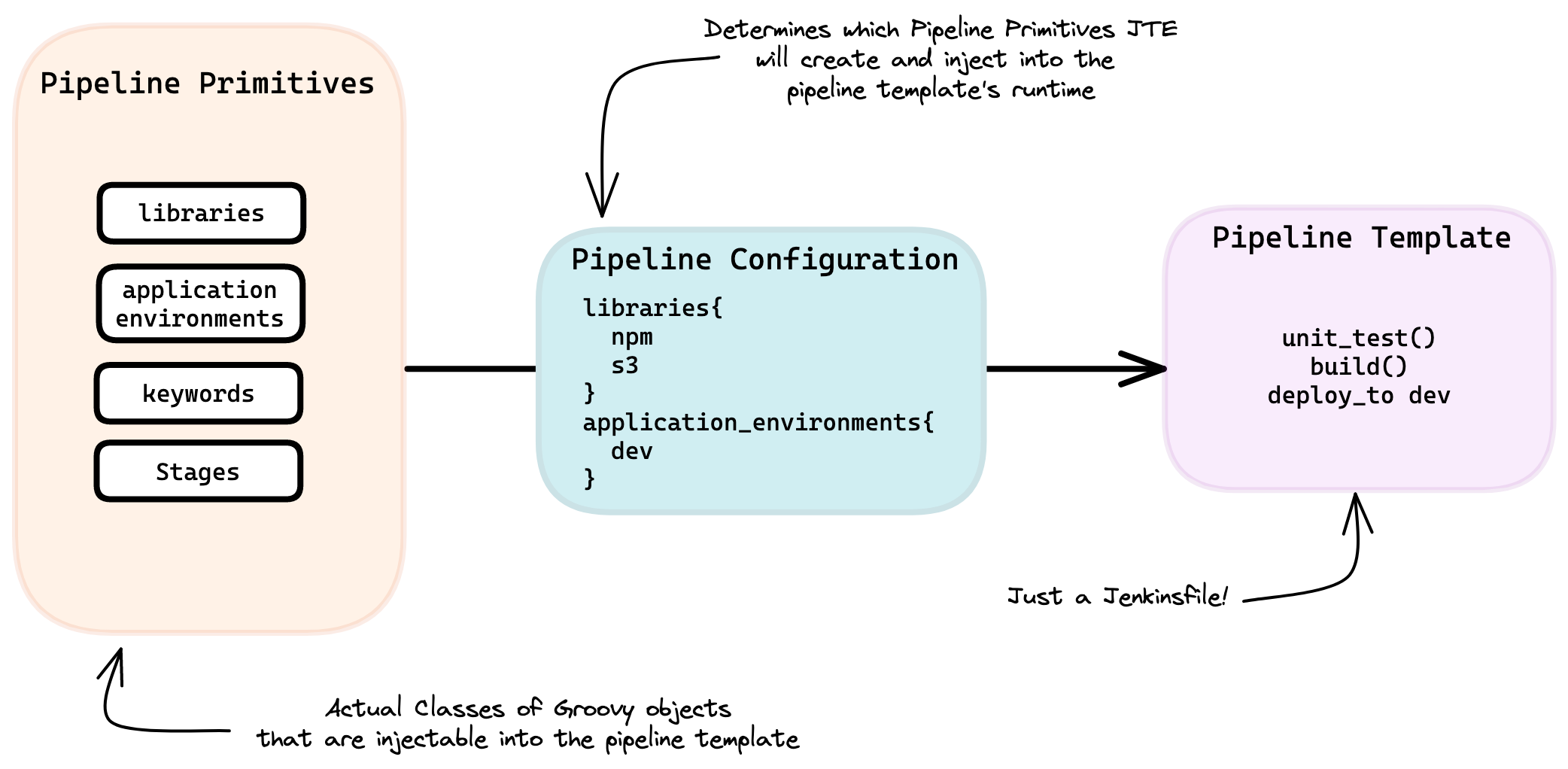Top-Down Explanation¶
Welcome !
This explanation is best suited for more experienced Jenkins users that are familiar with Jenkins pipeline's scripted syntax or software developers familiar with software design patterns.
Overview¶
To put it simply, the problem JTE is trying to solve is:
How can organizations stop building pipelines for each application individually?
The answer comes from the idea that within an organization, software development processes can be distilled into a subset of generic workflows.
Regardless of which tools are being used, the process often says the same.
Teams are typically going to run unit tests, build a software artifact, scan it, deploy it somewhere, test it some more, and promote that artifact to higher Application Environments.
Some teams do more, some teams do less, but it doesn't matter if that process uses npm, sonarqube, docker, and helm or gradle, fortify, and ansible; the process is the same.
As depicted in Figure 1, JTE allows you to take that process and represent it as a tool-agnostic Pipeline Template. This abstract Pipeline Template can then be made concrete by loading Pipeline Primitives such as steps. Which Pipeline Primitives to inject are determined by a Pipeline Configuration.

Tip: Design Patterns in Action
There are two general software architecture design patterns that might help in understanding the way JTE works.
The first is the Template Method Design Pattern. You could think of the pipeline template as the AbstractClass that defines the scaffold of an algorithm (pipeline) and libraries as various implementations of a ConcreteClass that bring implementations of steps in the algorithm.
The second is Dependency Injection. You could think of the JTE framework as the Injector, the pipeline template the Client, and each step a Dependency being injected.
Pipeline Templates¶
A Pipeline Template is nothing more than a Jenkinsfile with some stuff added at runtime.
Everything that can be done in a Jenkinsfile can be done in a Pipeline Template.
The only thing that makes a template a template is the use of Pipeline Primitives such that a single template can be used for multiple teams and multiple tools.

Pipeline Primitives¶
Pipeline Primitives are contributed by the JTE framework and help make templates reusable.
Pipeline Templates will typically make use of identically named Pipeline Primitives, such as step called build(), to become reusable.
Pipeline Configuration¶
The Pipeline Configuration is where teams declare which Pipeline Primitives should be injected into the Pipeline Template for their application(s).